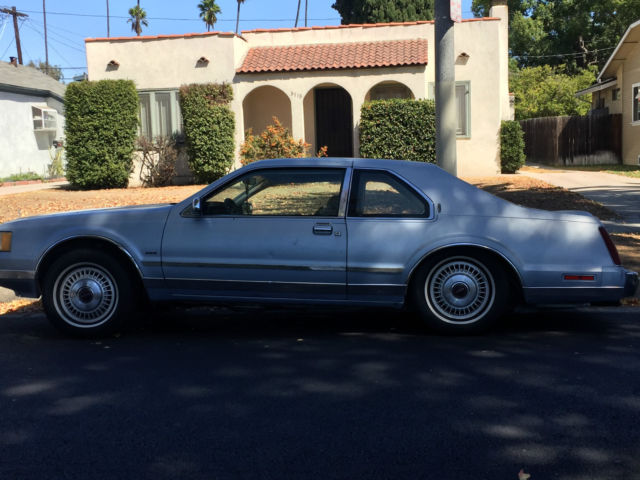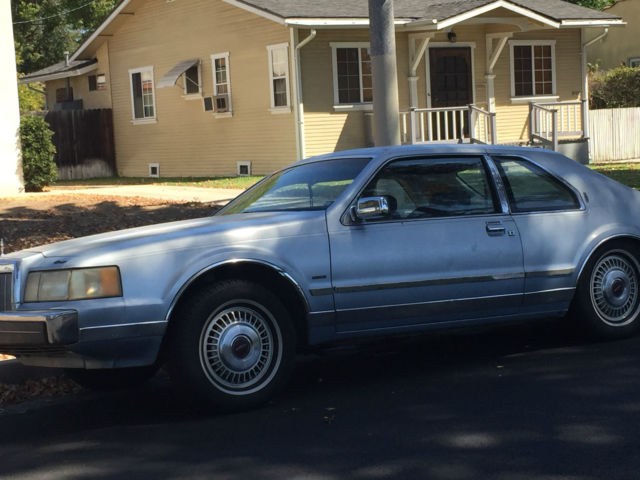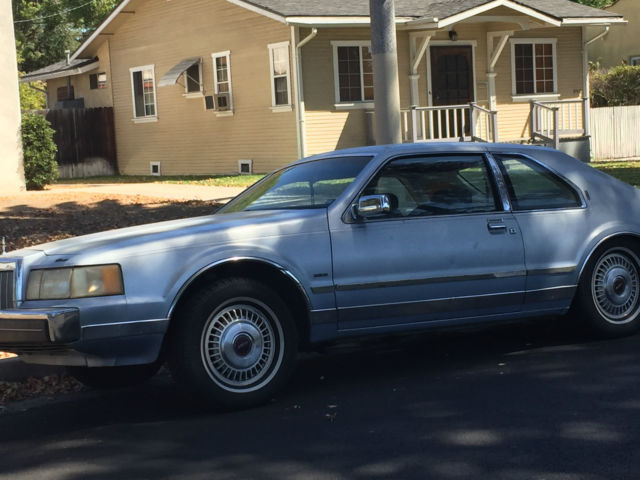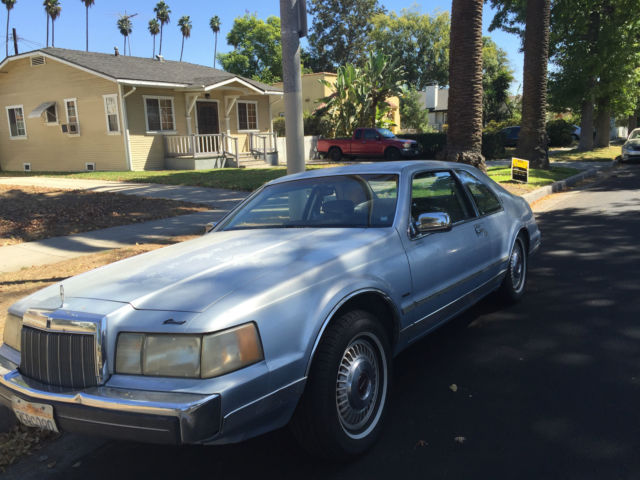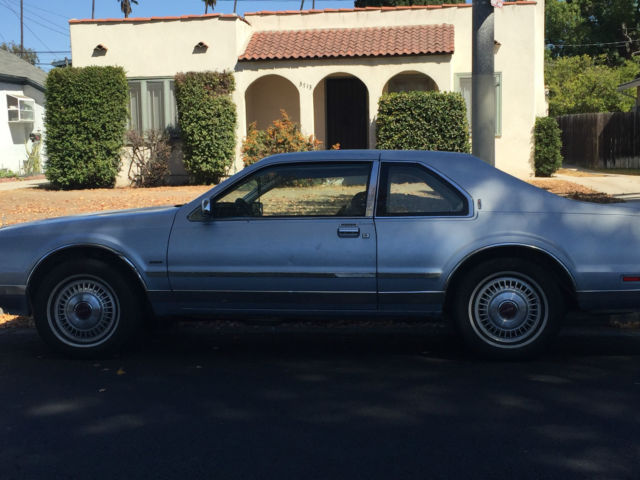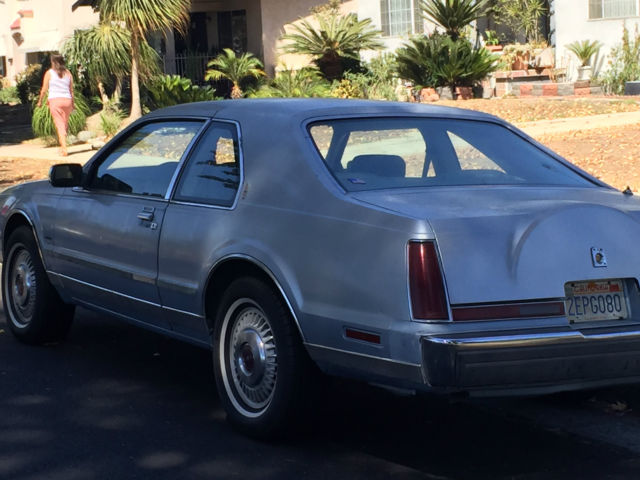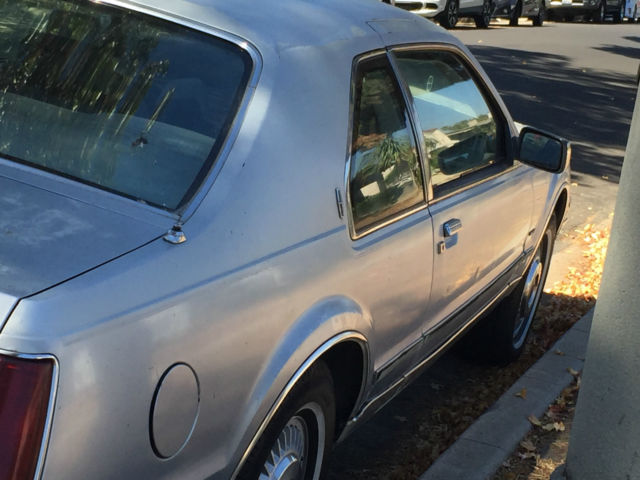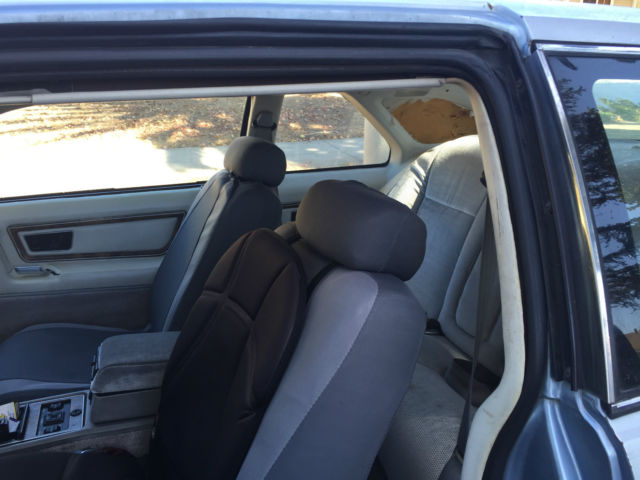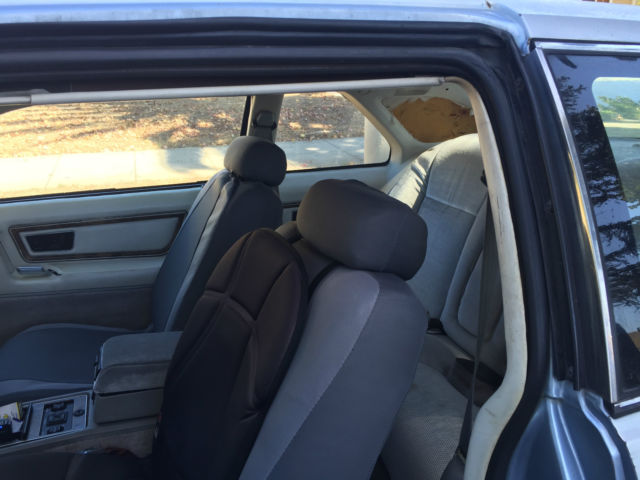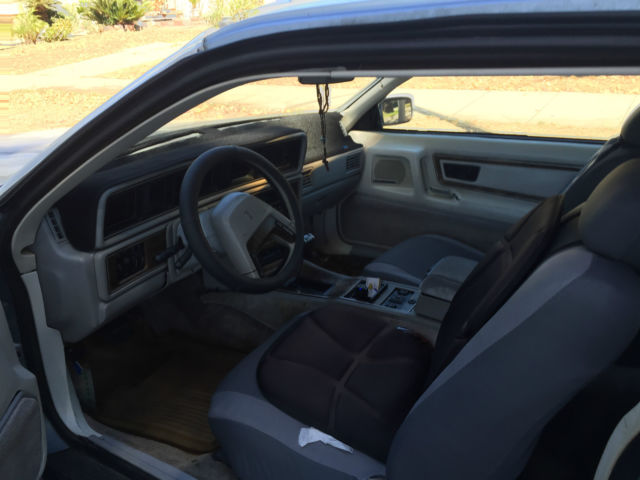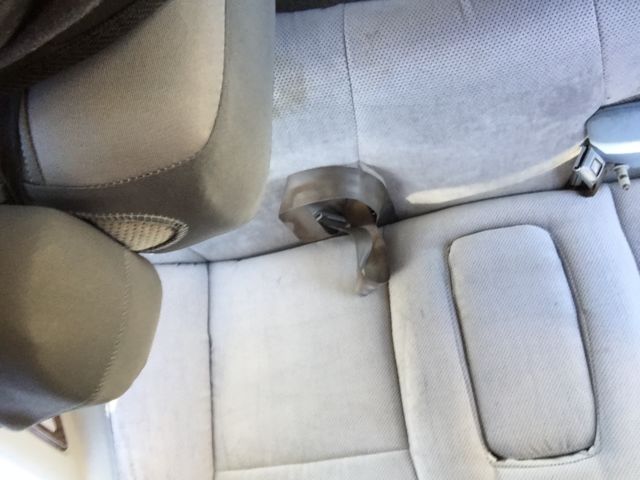1984 Lincoln Continental Mark VII
- Condition: Used
- Make: Lincoln
- Model: Continental
- Type: Sedan
- Trim: Mark VII Muntz
- Year: 1984
- Mileage: 35,000
- VIN: 1MRBP98F8EY634471
- Color: White
- Engine size: V-8
- Number of cylinders: 8
- Power options: Air Conditioning, Cruise Control, Power Locks, Power Windows, Power Seats
- Fuel: Gasoline
- Transmission: Automatic
- Drive type: RWD
- Interior color: Tan
- Drive side: Left-hand drive
- Options: TV/VCR, Cassette Player, Leather Seats, Sunroof
- Vehicle Title: Clear
- Location: Edmonds, Washington, United States
Description
This car was one of Earl "Madman" Muntz's personal cars and part of his extensive collection, as featured in this summer's Hemming's Classic Car Magazine. This is a piece of automotive and Hollywood history with only 35,000 miles on the car. It is a virtually time capsule in that it is equipped with all the best money could buy in 1984 with a built-in TV, rear antenna, VCR and the classic cellular antenna with phone!
The car:
The car is powered by a Ford Windsor 302ci fuel injected engine and coupled to a 4-speed automatic overdrive transmission. It has been recently tuned and runs like a top.
The exterior is the original Oxford white with Muntz decals on the passenger door and trunk. An external television antenna is also painted white to with the car. All of the chrome and trim are in excellent condition. The wheels and tires are like new as is the trunk.
The interior is equipped with the best money could buy in 1984! It is fully loaded with power everything and digital dash/gauges. It also has the premium sound system as well as a built in TV and VCR. The tan cloth seats are in excellent condition with the exception of a small cigarette burn on the driver's seat caused by the Madman himself.
This would be an exceptional Mark VII on its own with only 35,000 documented miles but this is your opportunity to own a piece of automotive and Hollywood history. It is hard to price a vehicle like this but we are going to start it off at a reasonable reserve and will accept reasonable offers. Of course, financing is available with approved credit and 20% down, if needed.
History of the man (Scroll down for the car details):
The very name conjures up memories, for many, of one of the wildest and craziest entrepreneurs of the 20th century. First of the loud, nutso, in-your-face used car salesmen, in the 1940s his billboards blanketed Southern California screaming, "I wanna give 'em away, but Mrs. Muntz won't let me - SHE'S CRAZY!" and "I buy 'em retail, sell 'em wholesale - IT'S MORE FUN THAT WAY!" These billboards, plus a steady bombardment of radio ads, helped Muntz sell $76 million worth of automobiles in 1947, when a million dollars was real money. And his logo -- a caricature of Muntz wearing a black Napoleon hat and red BVDs -- seemed to be everywhere.
He produced and sold Muntz TVs, cheap but functional sets that competed successfully in the marketplace with RCA, Philco and other electronic giants of the time. And his TV business made him a second multimillion dollar fortune.
He produced the first American sports car -- the Muntz Jet. A beautiful, well-crafted, speedy car that was a precursor of Chevrolet's Corvette, the Muntz Jet was an aesthetic and mechanical success, but Muntz's first financial disappointment. The Jets sold for $5,500 but they cost $6,500 to produce, and this at a time (the early 1950s) when a new Cadillac could be had for $3,200.
Earl Muntz's third fortune came in the 1960s when he invented the four-track car stereo, becoming the first major player in the soon-to-be-huge car stereo market. His Muntz Stereo-Pak was a roaring success, and his "Madman" persona, already embedded in the nation's consciousness over the previous 20 years, was omnipresent.
His marital history, in the meantime, hardly matched his succes in business. Muntz married seven times, each wife a beauty. One wife was the singer and actress Joan Barton, onetime costar to John Wayne. Another wife was Patricia Stevens, owner of the nationwide string of Patricia Stevens Finishing Schools. And, when not married, there were plenty of girlfriends. In later years, one of the most prominent was comedienne Phyllis Diller.
An outgoing and fun-loving guy, his many pals included singer Rudy Vallee, comedian Jerry Colonna, actor Bert Lahr, presidential son James Roosevelt, TV host Dick Clark and cowboy star Gene Autry.
A millionaire among movie stars. Pretty heady stuff for a high school dropout from the small town of Elgin, Illinois. Born in 1914, Earl Muntz was a born tinkerer. He built his first radio at the age of eight. By the age of 14, in 1928, he had built his own car radio, one of the first ever. And by age 20 he had his own used car lot, with his mother signing all the sales paperwork as Earl wasn't yet of legal age to sign the deals himself.
Then, in 1941, Earl headed west and opened a used car lot in Glendale, California. He soon opened a second lot in downtown Los Angeles and, more importantly, met up with a young advertising whiz named Mike Shore. Muntz gave Shore a free hand to come up with whatever gimmicks Shore thought might sell cars. The deluge of billboards and radio commercials (as many as 170 a day!) that followed, all built around the "Madman" Muntz figure, resulted in Muntz soon becoming the largest-volume used car dealer in the world.
During World War II, with no new cars being manufactured, used cars were at a premium, especially on the west coast. So Muntz bought cars in the midwest at low prices and hired servicemen to drive them west where they sold for double what Muntz paid for them. The servicemen not only got a comfotable ride cross-country, but Muntz paid them $50 each. Everybody made out and thousands were delivered. And only once did a car disappear in transit. But it was recovered a year later and was sold for twice as much as it would have brought if delivered on time!
Muntz himself loved the open road and would often drive cars from Chicago to Los Angeles himself. And, in that era before freeways, when Route 66 went through every town, he prided himself on regularly making the run in a mere 33 hours, faster than the Santa Fe Chief passenger train!
Bob Hope, Jack Benny, Red Skelton and other radio comedians of the era seemed to compete to see who could come up with more "Madman" Muntz jokes. And each joke, of course, made Muntz more famous, which brought him more business, which made him richer and richer. By 1945, Gray Line bus tours, after visiting the Hollywood sign and Grauman's Chinese Theater, would stop by Muntz's sprawling used car lot. A household name, he had become one of L.A.'s major tourist attractions!
Then came the TV years. Muntz thought the television sets on the market at the time were far too complicated, so he experimented by buying an existing set, disassembling it, then removing parts one at a time. If the set still played, he removed another part. Then another and another. Finally, with the set simplified as much as it could be, it became a Muntz TV! And these black and white TV sets, the smallest of which sold for $99.95, breaking the $100 price barrier for the first time, became some of the hottest selling consumer products in America.
And "Madman's" creative advertising methods continued. He bought a half dozen skywriting planes to fly over Los Angeles and other cities spelling out "Muntz Television." However, by the time a plane would get to the middle of the word "television," "Muntz" was already starting to blow away. So, thinking outside the proverbial box, Muntz shortened the word "television" to "TV," thus coining the term we all use today. But then, apparently unable to stop himself, he even named his daughter Tee Vee!
In the early '50s, always on the lookout for a new business opportumity, Muntz became an automoblie manufacturer. This period in his life actually began in the late 1940s when nationally known race car wizard Frank Kurtis, who eventually developed a number of Indianapolis 500 winners, designed and built about 20 aluminum-bodied two-seater sports cars. Kurtis, however, lacked production resources, so Muntz stepped in and bought the manufacturing rights.
In an effort to make the car more saleable to the public, Muntz redesigned the car that was soon dubbed the Muntz Jet. He stretched the wheelbase, put in a back seat, replaced the Ford engines with Cadillac V-8s, added padded dashboards and seat belts, painted the cars in bright Easter egg colors, and even installed liquor and ice cabinets!
Though records are unreliable, Muntz said he produced 394 Jets. Many sold to celebrities. Owners included silent screen star Clara Bow, opera singer Mario Lanza, and actors Clark Gable and Mickey Rooney.
Muntz lost money on the car from the start, but the publicity the Jet generated reflected well on his TV business so he didn't put the brakes on production until 1954. Today, approximately 130 of the cars can be accounted for, and a fully-restored Jet can sell for $75,000 or more.
In the mid-'50s, with color television on the horizon, sales of Muntz's cheap black and white sets fell precipitously, and he was forced into bankruptcy. He received about $200,000 for his stock, which had once been worth $6 million.
Not one to be down for long, Muntz went back to tinkering and came up with a four-track car stereo he called the Muntz Stereo-Pak. He opened a manufacturing plant and store in Van Nuys, and was once again the talk of Southern California. Cute and sexy Muntz Girls took orders at the front desk and lines of cars stretched for blocks to have the stereos installed.
Throughout the '70s and into the '80s, aided greatly in his Van Nuys headquarters by his son Jim, Muntz added other businesses to his resume, some more successful than others. These ventures included the Muntz Motor Mansion, Muntz Satellite Dishes, Muntz Giant Screen TVs -- even 11 Muntz All-Aluminum Homes!
And he just kept going and going and going... until his death in 1987, when he had already become the top Los Angeles retailer of a new technological marvel called the cellular phone and was on his way to yet another multimillion dollar fortune.
In the end, though, it's ironic that the one thing that never made him any money, the Muntz Jet, is what stands as his lasting legacy.
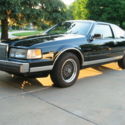 Lincoln Continental Mark VII 1984 Diesel 2.4L 6 Cylinder BMW Sunroof
Lincoln Continental Mark VII 1984 Diesel 2.4L 6 Cylinder BMW Sunroof
Mileage: 132000
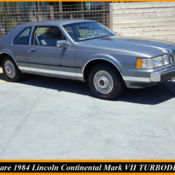 ULTRA RARE 1984 LINCOLN CONTINENTAL MARK VII TURBODIESEL ONLY 71K MILES CA. CAR!
ULTRA RARE 1984 LINCOLN CONTINENTAL MARK VII TURBODIESEL ONLY 71K MILES CA. CAR!
Mileage: 71,521
 RARE 1984 Lincoln Continental Mark VII BILL BLASS DESIGNER SERIES TURBO DIESEL
RARE 1984 Lincoln Continental Mark VII BILL BLASS DESIGNER SERIES TURBO DIESEL
Mileage: 111,661
 1977 Lincoln Continental mark V 460 Lincoln continental mark V
1977 Lincoln Continental mark V 460 Lincoln continental mark V
Mileage: 86,910
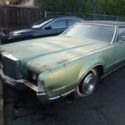 Lincoln Continental Mark IV Coupe Lincoln Continental Mark IV
Lincoln Continental Mark IV Coupe Lincoln Continental Mark IV
Mileage: 103,600
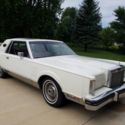 1982 Lincoln Mark Series MARK VI CONTINENTAL Nice condition for age!
1982 Lincoln Mark Series MARK VI CONTINENTAL Nice condition for age!
Mileage: 94,056
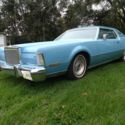 1975 Lincoln Continental 56,000 miles mk Mark IV iv Mark 4 Rare
1975 Lincoln Continental 56,000 miles mk Mark IV iv Mark 4 Rare
Mileage: 56,000
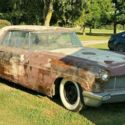 1957 Continental Mark II - 57 Lincoln - 56 1956 Mk II Mark 2 Restomod???
1957 Continental Mark II - 57 Lincoln - 56 1956 Mk II Mark 2 Restomod???
Mileage: 95140
 NO RESERVE 1970 Lincoln Mark III continental Mark 3
NO RESERVE 1970 Lincoln Mark III continental Mark 3
Mileage: 70,244
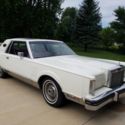 1982 Lincoln Mark Series MARK VI CONTINENTAL
1982 Lincoln Mark Series MARK VI CONTINENTAL
Mileage: 94,056
